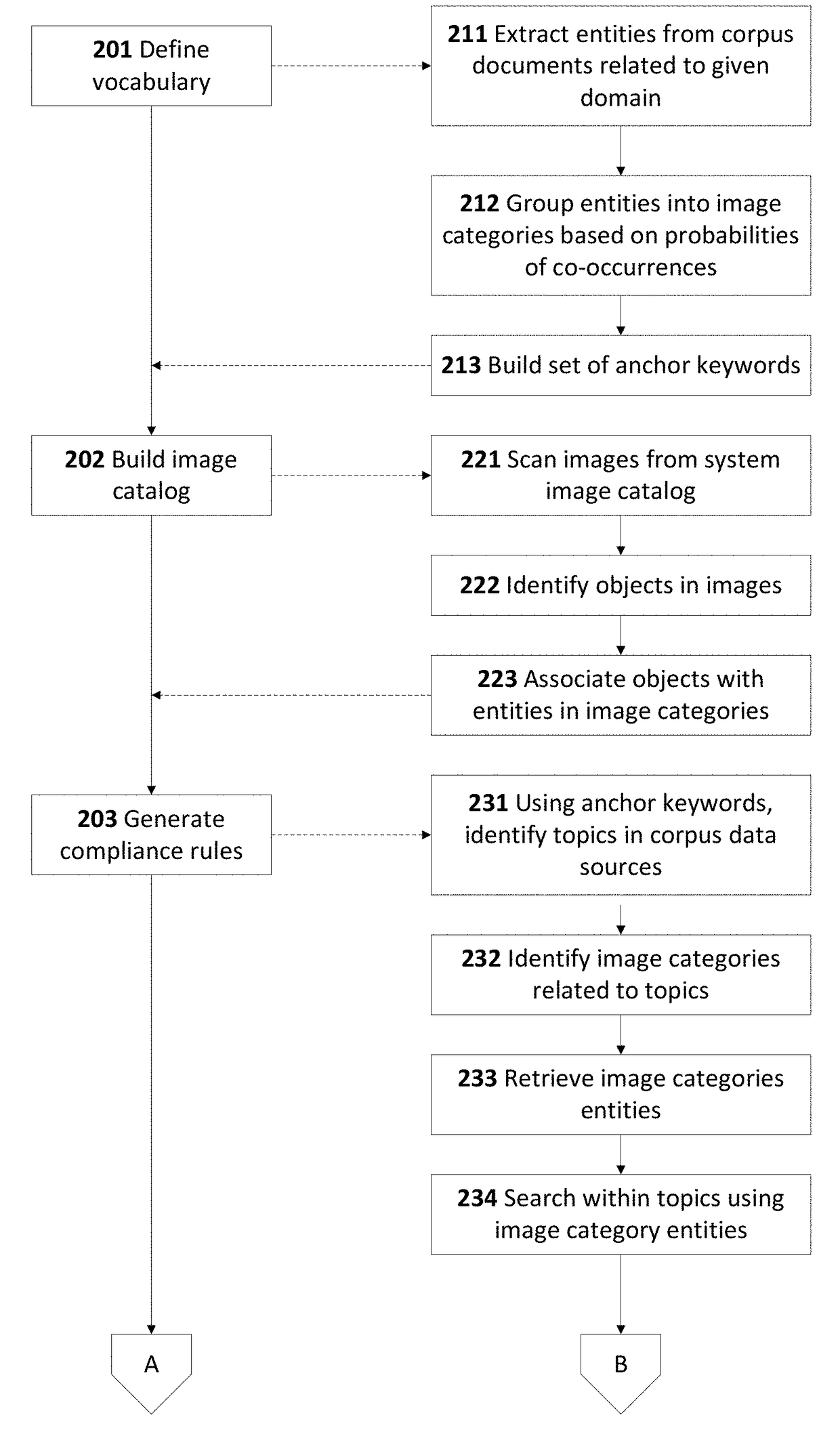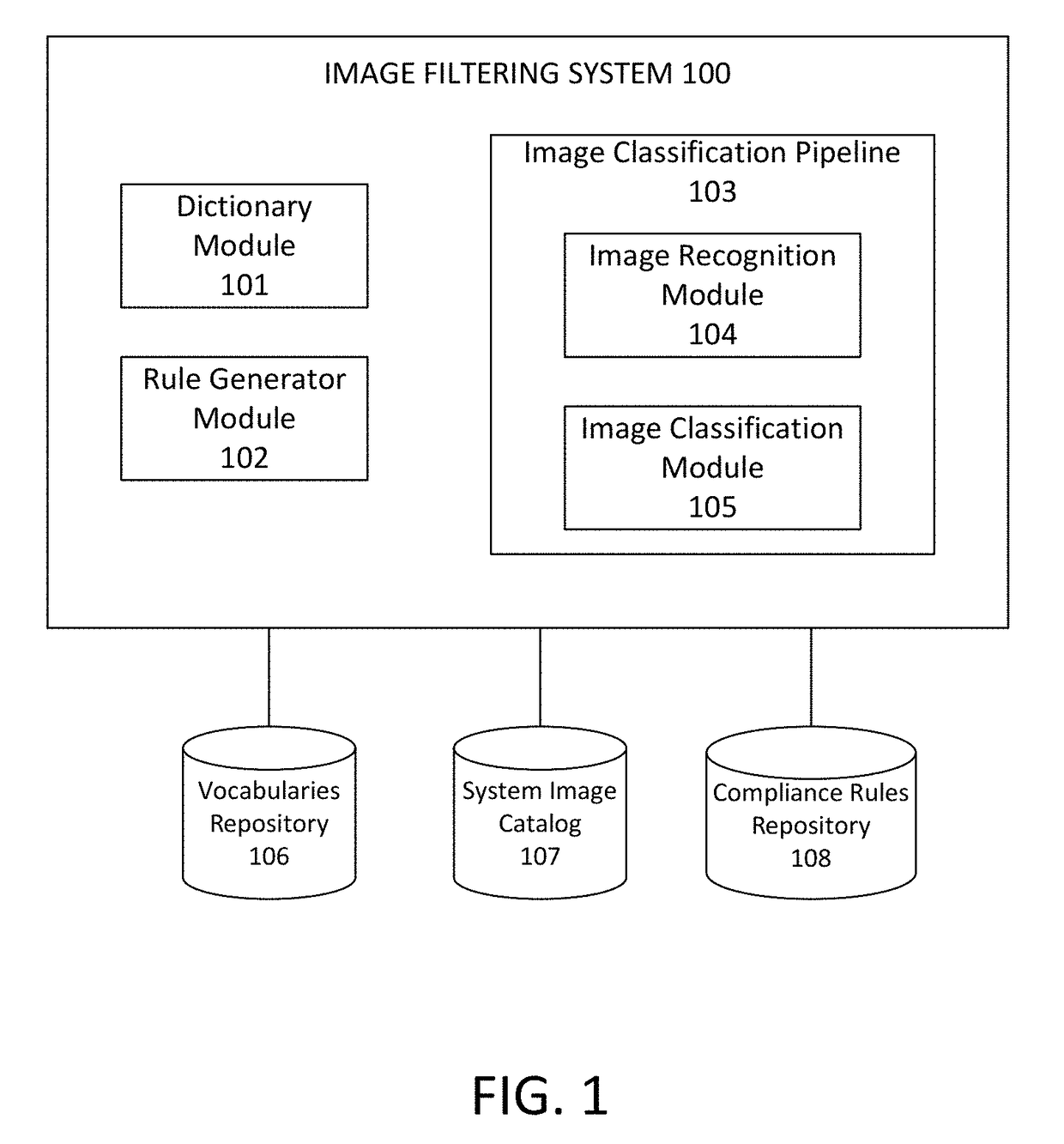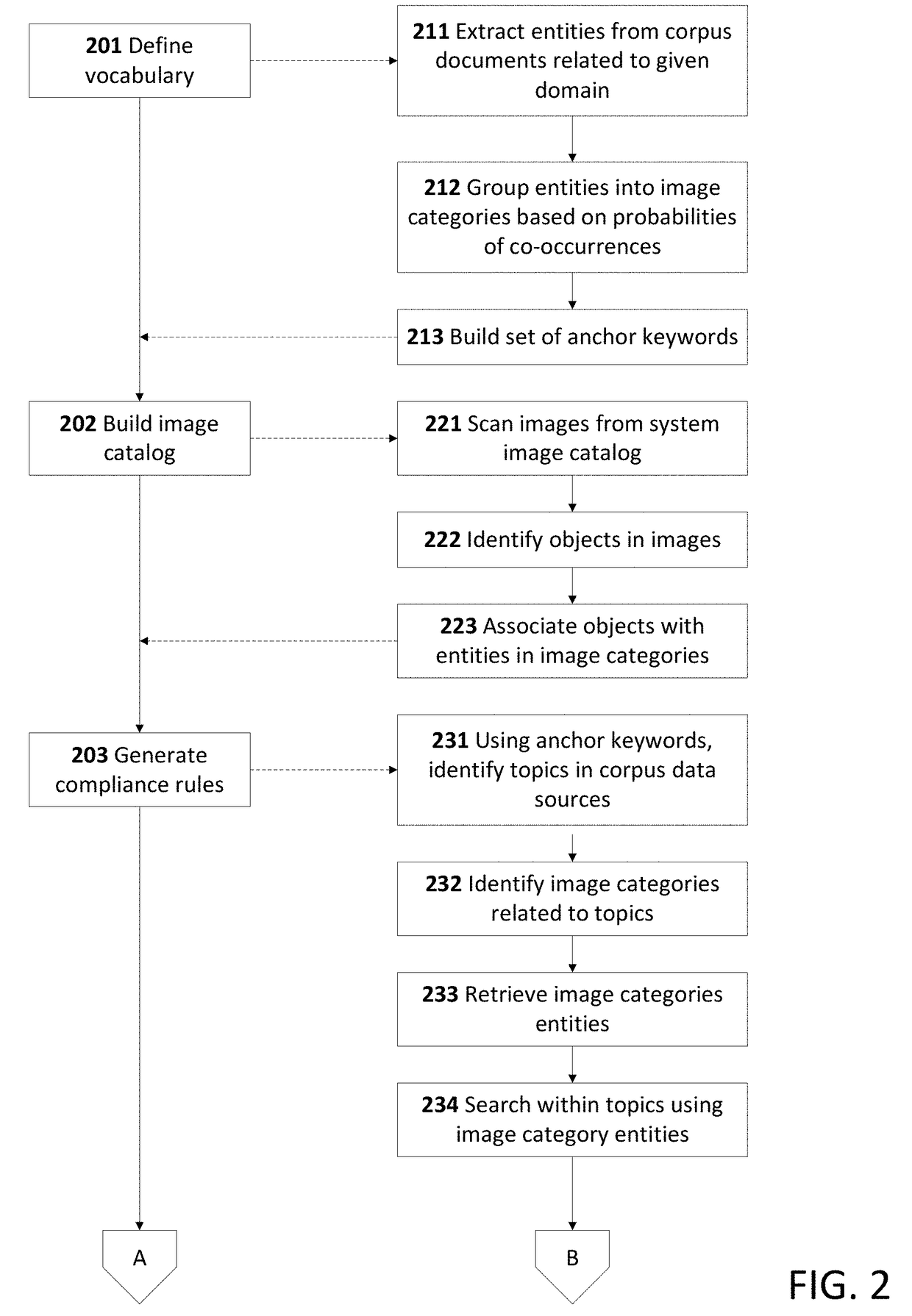Smart image filtering method with domain rules application
a filtering method and domain rule technology, applied in the field of smart image filtering method with domain rule application, can solve the problems of unsafe or unhealthy, not all images depict behavior consistent with recommended health and safety practices, etc., and achieve the effect of improving performance and enhancing existing compliance rules
- Summary
- Abstract
- Description
- Claims
- Application Information
AI Technical Summary
Benefits of technology
Problems solved by technology
Method used
Image
Examples
Embodiment Construction
[0011]Embodiments of the present invention provide an image filtering system that analyzes images for their consistency with known health and safety regulations, recommendations, or guidelines. At a learning phase, the system is pre-trained using a dynamically generated set of compliance rules for a given domain. At run time, the system processes images and classifies them with various levels of compliance, as defined by the compliance rules. Depending on the compliance level, the system may alter the image with alerts, warnings, reminders, or other tags.
[0012]FIG. 1 illustrates an embodiment of an image filtering system according to the present invention. The image filtering system 100 comprises a dictionary module 101 for building domain vocabularies, a rule generator module 102 for building compliance rules, and an image classification pipeline 103 comprising an image recognition module 104 and an image classification module 105. The image recognition module 104 processes images ...
PUM
 Login to View More
Login to View More Abstract
Description
Claims
Application Information
 Login to View More
Login to View More - R&D
- Intellectual Property
- Life Sciences
- Materials
- Tech Scout
- Unparalleled Data Quality
- Higher Quality Content
- 60% Fewer Hallucinations
Browse by: Latest US Patents, China's latest patents, Technical Efficacy Thesaurus, Application Domain, Technology Topic, Popular Technical Reports.
© 2025 PatSnap. All rights reserved.Legal|Privacy policy|Modern Slavery Act Transparency Statement|Sitemap|About US| Contact US: help@patsnap.com



